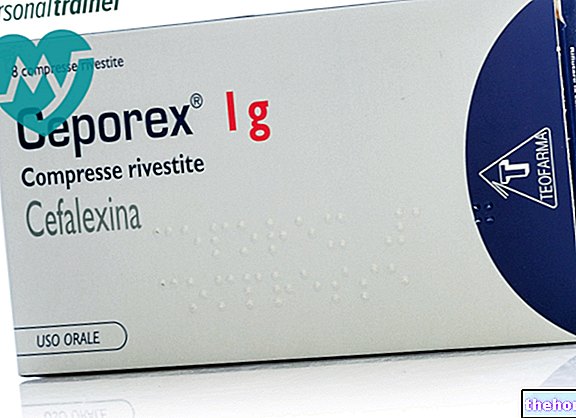Active ingredients: Diosmectite
DIOSMECTAL 3 g powder for oral suspension
Indications Why is Diosmectal used? What is it for?
PHARMACOTHERAPEUTIC CATEGORY
Intestinal adsorbents: antacid, peptic ulcer, antimeteoric, antidiarrheal.
THERAPEUTIC INDICATIONS
- oral symptomatic treatment of painful symptoms of esophagogastro-intestinal diseases, such as oesophageal reflux and its complications (esophagitis), hiatus hernia, gastritis, gastroduodenal ulcer, bulbitis, colitis, functional colopathies, meteorism.
- treatment of acute and chronic diarrhea in children (including infants) and adults, in addition to treatments with rehydrating saline solutions.
Contraindications When Diosmectal should not be used
Hypersensitivity to the active substance or to any of the excipients
Precautions for use What you need to know before taking Diosmectal
Use with caution in adults with severe chronic constipation.
Treatment of acute diarrhea in children should be associated with early administration of mineral salts (oral saline supplements) to avoid dehydration.
In adults, treatment with Diosmectal does not exempt from rehydration, when this appears necessary.
The extent of the integration with mineral salts and of rehydration, possibly also by venous route, must be adapted on the basis of the severity of the diarrhea and according to the age and clinical picture of the patient.
Interactions Which drugs or foods can modify the effect of Diosmectal
Tell your doctor or pharmacist if you have recently taken any other medicines, even those without a prescription.
Due to its high adsorbing power, DIOSMECTAL can interfere with the absorption of other oral drugs. Any other oral drugs must, therefore, be taken at a distance from DIOSMECTAL.
Warnings It is important to know that:
Administer any other oral medications at a distance from the intake of DIOSMECTAL.
Fertility, pregnancy and breastfeeding
Ask your doctor or pharmacist for advice before taking any medicine. Diosmectal is not absorbed. Therefore, it does not present limitations of use in the aforementioned conditions.
Important information about some of the ingredients
The product contains glucose, in case of ascertained intolerance to sugars contact your doctor before taking the medicine.
Dosage and method of use How to use Diosmectal: Dosage
Dosage
Treatment of acute diarrhea:
Children and babies:
- under 1 year: 2 sachets per day for 3 days, then 1 sachet per day until the diarrhea is completely resolved, for a maximum treatment period of 14 days; if the episode of acute diarrhea does not resolve after 7 days of treatment, it is advisable to consult your doctor.
- over 1 year: 4 sachets per day for 3 days, then 2 sachets per day until the diarrhea is completely resolved, for a maximum treatment period of 14 days; if the episode of acute diarrhea does not resolve after 7 days of treatment, it is advisable to consult your doctor.
Adults:
the recommended daily dose is 6 sachets per day
Treatment of other indications:
Children and babies:
- under 1 year: 1 sachet / day
- from 1 to 2 years: 1-2 sachets / day
- over 2 years: 2-3 sachets / day
Adults:
- on average 3 sachets per day
Method of administration:
The contents of the sachet must be dispersed in suspension just before use.
It is advisable to administer preferably after meals in esophagitis and after meals in other indications.
Children and babies:
The contents of the sachet can be dispersed in suspension in the bottle in 50 ml of water and divided into 2-3 doses during the day or mixed with any other drink or semi-liquid food.
Adults:
To obtain a homogeneous suspension, slowly pour the powder into half a glass of water and mix.
Overdose What to do if you have taken too much Diosmectal
No cases of overdose or intoxication have been reported.
IF IN ANY DOUBT ABOUT THE USE OF DIOSMECTAL, CONTACT YOUR DOCTOR OR PHARMACIST.
Side Effects What are the side effects of Diosmectal
Like all medicines, Diosmectal can cause side effects, although not everybody gets them.
Side effects reported during clinical trials with the following frequencies have always been mild and transient and have affected the gastrointestinal system:
- uncommon (≥ 1 / 1,000, ≤ 1/100): episodes of constipation.
These episodes improved after individual dose adjustments.
Additional information from post-marketing experience includes very rare cases (frequency not known) of hypersensitivity reactions, including urticaria, rash, pruritus or angioedema.
Compliance with the instructions contained in the package leaflet reduces the risk of undesirable effects.
If any of the side effects gets serious, or if you notice any side effects not listed in this leaflet, please tell your doctor or pharmacist.
Expiry and Retention
Expiry: see the expiry date indicated on the package.
Warning: do not use the product after the expiry date indicated on the package. The expiry date refers to the product in intact packaging, correctly stored.
This medicine does not require any special storage conditions.
Medicines should not be disposed of via wastewater or household waste. Ask your pharmacist how to throw away medicines you no longer use. This will help protect the environment. Keep out of the reach and sight of children.
COMPOSITION
One 3.760 g sachet of powder for suspension contains:
active ingredient: diosmectite 3 g
excipients: sodium saccharin, glucose monohydrate, vanilla flavor, orange flavor.
PHARMACEUTICAL FORM AND CONTENT
powder for oral suspension - 30 sachets
Source Package Leaflet: AIFA (Italian Medicines Agency). Content published in January 2016. The information present may not be up-to-date.
To have access to the most up-to-date version, it is advisable to access the AIFA (Italian Medicines Agency) website. Disclaimer and useful information.
01.0 NAME OF THE MEDICINAL PRODUCT
DIOSMECTAL 3 G POWDER FOR ORAL SUSPENSION
02.0 QUALITATIVE AND QUANTITATIVE COMPOSITION
One sachet contains:
active ingredient: diosmectite 3 g
For the full list of excipients see section 6.1
03.0 PHARMACEUTICAL FORM
Powder for oral suspension.
04.0 CLINICAL INFORMATION
04.1 Therapeutic indications
There are numerous clinical experiences conducted with diosmectite in adults and children, with affections of:
• upper digestive tract, which are mainly functional or iatrogenic: acid hypersecretion, associated with reduced protective activity of the gastroduodenal mucosa, gastroesophageal and / or duodeno-gastric reflux, dyskinesias, intake of drugs potentially damaging to the mucous membranes;
• lower digestive tract, which are mainly infectious: virulentation of the saprophytic bacterial flora and / or colonization by pathogens.
The functional or iatrogenic pathology is more frequent in the adult, while the infectious one is dominant in the child.
The results of these experiences are in agreement in recognizing a "high incidence of healings or marked improvements in symptoms obtained with diosmectite compared to those of the homogeneous comparison groups treated with active drugs of the same indication and, above all, to those treated in double blind with placebo.
• oral symptomatic treatment of painful symptoms of esophageal-gastro-intestinal diseases, such as oesophageal reflux and its complications (esophagitis), hiatus hernia, gastritis, gastroduodenal ulcer, bulbitis, colitis, functional colopathies, meteorism.
• treatment of acute and chronic diarrhea in children (including infants) and adults, in addition to treatments with rehydrating saline solutions.
04.2 Posology and method of administration
Dosage
Treatment of acute diarrhea:
Children and babies:
• under 1 year: 2 sachets per day for 3 days, then 1 sachet per day until the diarrhea is completely resolved, for a maximum treatment period of 14 days; if the episode of acute diarrhea does not resolve after 7 days of treatment, it is advisable to consult your doctor.
• over 1 year: 4 sachets per day for 3 days, then 2 sachets per day until the diarrhea is completely resolved, for a maximum treatment period of 14 days; if the episode of acute diarrhea does not resolve after 7 days of treatment, it is advisable to consult your doctor.
Adults:
• the recommended daily dose is 6 sachets per day
Treatment of other indications:
Children and babies:
• under 1 year: 1 sachet / day
• from 1 to 2 years: 1-2 sachets / day
• over 2 years: 2-3 sachets / day
Adults:
• on average 3 sachets per day
Method of administration :
The contents of the sachet must be dispersed in suspension just before use.
It is advisable to administer preferably after meals in esophagitis and after meals in other indications.
Children and babies:
The contents of the sachet can be dispersed in suspension in the bottle in 50 ml of water and divided into 2-3 doses during the day or mixed with any other drink or semi-liquid food.
Adults:
To obtain a homogeneous suspension, slowly pour the powder into half a glass of water and mix.
04.3 Contraindications
Hypersensitivity to the active substance or to any of the excipients.
04.4 Special warnings and appropriate precautions for use
The administration of any other oral drugs must be carried out at a distance from the intake of DIOSMECTAL.
Use with caution in adults with a previous history of severe chronic constipation.
Treatment of acute diarrhea in children should be associated with early administration of mineral salts (oral saline supplements) to avoid dehydration.
In adults, treatment with Diosmectal does not exempt from rehydration, when this appears necessary.
The extent of the integration with mineral salts and of rehydration, possibly also by venous route, must be adapted on the basis of the severity of the diarrhea and according to the age and clinical picture of the patient.
The medicine contains glucose monohydrate therefore patients with rare problems of glucose-galactose malabsorption should not take this medicine.
04.5 Interactions with other medicinal products and other forms of interaction
Its high adsorbent power can interfere with the gastrointestinal absorption of some drugs administered orally. Any other oral therapies must, therefore, be taken at a distance from DIOSMECTAL.
04.6 Pregnancy and lactation
Diosmectal is not absorbed. Therefore, there is no limitation of use in the aforementioned conditions
04.7 Effects on ability to drive and use machines
Not relevant.
04.8 Undesirable effects
Side effects reported during clinical trials with the following frequencies have always been mild and transient and have affected the gastrointestinal system:
• uncommon (≥ 1 / 1,000, ≤ 1/100): episodes of constipation.
These episodes improved after individual dose adjustments.
Additional information from post-marketing experience includes very rare cases (frequency not known) of hypersensitivity reactions, including urticaria, rash, pruritus or angioedema.
04.9 Overdose
No cases of overdose or intoxication have been reported.
05.0 PHARMACOLOGICAL PROPERTIES
05.1 Pharmacodynamic properties
Pharmacotherapeutic group: intestinal adsorbents, ATC code: A07BC05
DIOSMECTAL possesses gastroprotective properties as it interacts with the glycoproteins of the mucous film that covers the gastroduodenal wall, modifying its physical and chemical characteristics in such a way as to accentuate the protective functions against acid hypersecretion, which is involved in the pathogenesis of the gastroduodenal ulcer, proteolytic enzymes, of certain gastrically damaging substances and pathogenic microorganisms.
It also possesses anti-fermentative activities, essentially linked to its crystalline structure in overlapping lamellae which gives it a high adsorbing power. This power is exerted against neutral or ionized substances, flora and microbial toxins, intestinal gas.
Finally, it has the property of activating some coagulation factors (VII, VIII, XII) which can be useful locally in case of bleeding from erosions or ulcerations of the mucosa.
It is radiolucent and does not affect gastrointestinal transit time.
The results of pooled data from two randomized, double-blind, placebo-controlled clinical trials involving 602 children aged 1 to 36 months with acute diarrhea who were given Diosmectal or placebo in combination with oral saline supplements, showed a decrease significant in the first 72 hours of stool emission in the overall population: mean 94.5 (standard deviation 74.4) g / kg in the group of patients treated with diosmectite compared to 104.1 g / kg in the group of patients treated with placebo (p = 0.0016). In the rotavirus positive sub-population (n = 91), the mean stool emission (g / kg body weight) is 124.3 (standard deviation 98.3) in the diosmectite-treated patient group compared to 186.8 in the placebo group (p = 0.0005).
A third double-blind, placebo-controlled study in 243 children aged 2 to 36 months with acute watery diarrhea treated with disomectitis in combination with oral saline supplements showed no significant difference in mean stool emission: the mean amount Cumulative (± Standard Deviation) in the first 48 hours was 98.5 ± 78.0 g / kg body weight in the diosmectite group compared to 112.1 ± 91.8 g / kg body weight in the placebo (NS) group. "secondary endpoint" decrease in the duration of diarrhea episodes "was achieved significantly in the diosmectite-treated group: median [range] 43 hours (10-289) in the diosmectite-treated group, 72 hours (12-287.5) in the placebo (p = 0.0263).
The results of a double-blind, randomized study of 329 adults with acute watery diarrhea showed a significant decrease in the duration of diarrhea in the group of patients treated with diosmectitis (median of 53.8 hours [3.7 "." 167.3]) compared to the group of patients treated with placebo (median of 69 hours [2.2-165.2]), p = 0.029.
05.2 Pharmacokinetic properties
Experimental and clinical studies have shown that the preparation does not overcome the gastrointestinal barrier even in patients with functional and structural alterations of the gastrointestinal mucosa, which could be a favoring factor on absorption.
05.3 Preclinical safety data
Chronic toxicity studies conducted in rats and dogs for a period of one year show that the active ingredient of the preparation, even at doses 10-15 times higher than the therapeutic one, does not induce specific modifications and alterations to organs and functions, in consideration also of its non-absorption. In some animals, changes in lipid metabolism have been recorded, in particular an increase in triglyceridemia at high doses which cannot find a reasonable explanation but which in any case are never dose-dependent, often regress over time and do not reach pathological levels.
06.0 PHARMACEUTICAL INFORMATION
06.1 Excipients
Sodium saccharin, glucose monohydrate, vanilla flavor, orange flavor.
06.2 Incompatibility
None, with the exception of interference in the absorption phase with respect to some other drugs administered simultaneously.
06.3 Period of validity
3 years in unopened package.
06.4 Special precautions for storage
This medicine does not require any special storage conditions.
06.5 Nature of the immediate packaging and contents of the package
Cardboard box containing 30 heat-sealed sachets of 3.760 g
Cardboard box containing 20 heat-sealed sachets of 3.760 g
Cardboard box containing 10 heat-sealed sachets of 3.760 g
Not all pack sizes may be marketed.
06.6 Instructions for use and handling
To obtain a homogeneous suspension, slowly pour the powder into half a glass of water and mix regularly.
07.0 MARKETING AUTHORIZATION HOLDER
Malesci Pharmacobiological Institute S.p.A. - Via Lungo l "Ema, 7 - Bagno a Ripoli FI
Under license: SCRAS S.A. - Paris (France)
08.0 MARKETING AUTHORIZATION NUMBER
AIC n. 028852010 (30 sachets)
AIC n. 028852034 (20 sachets)
AIC n. 028852022 (10 sachets)
09.0 DATE OF FIRST AUTHORIZATION OR RENEWAL OF THE AUTHORIZATION
Date of first authorization:
• 30 packets: 31.10.1995
• 10 and 20 packets: 18.11.1999
Date of last renewal: 31.10.2010
10.0 DATE OF REVISION OF THE TEXT
July 2011




























